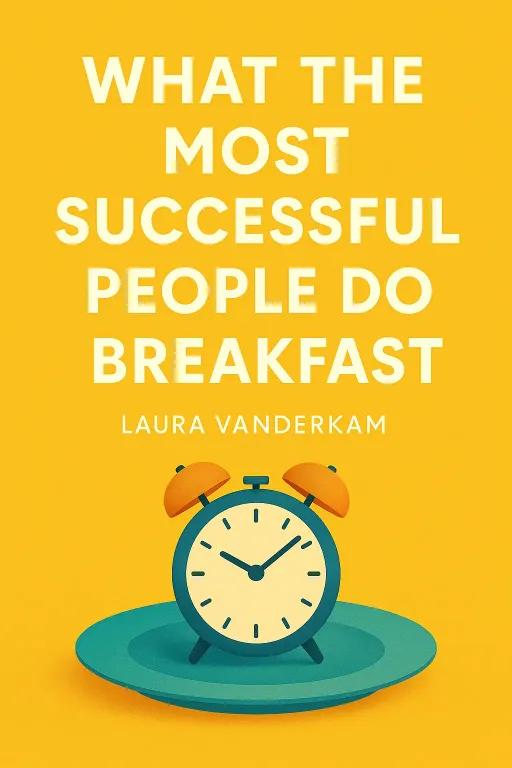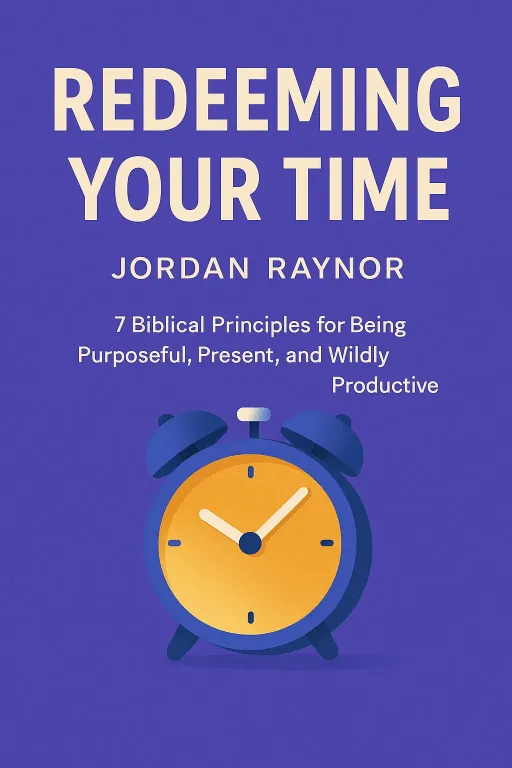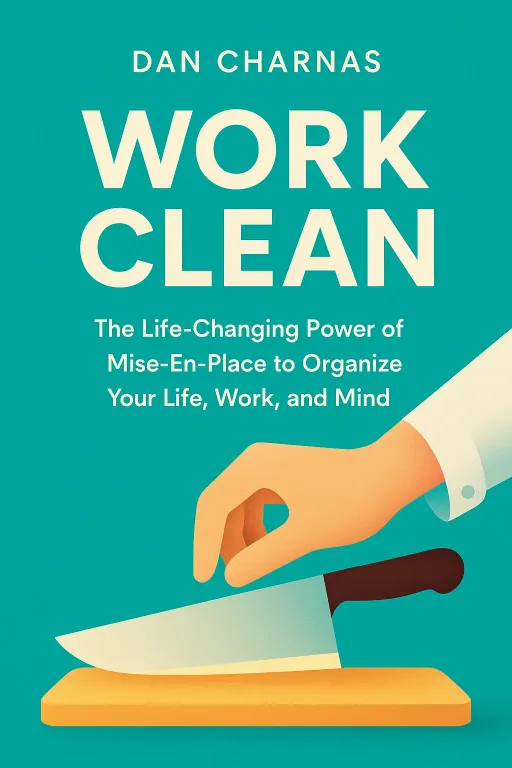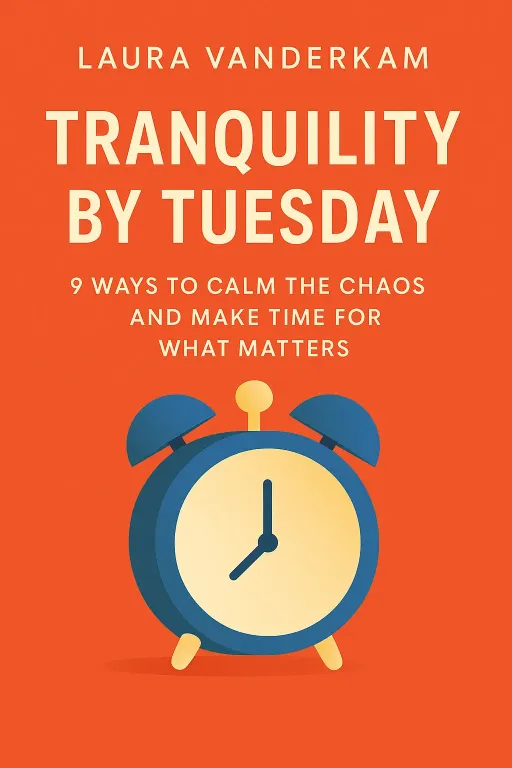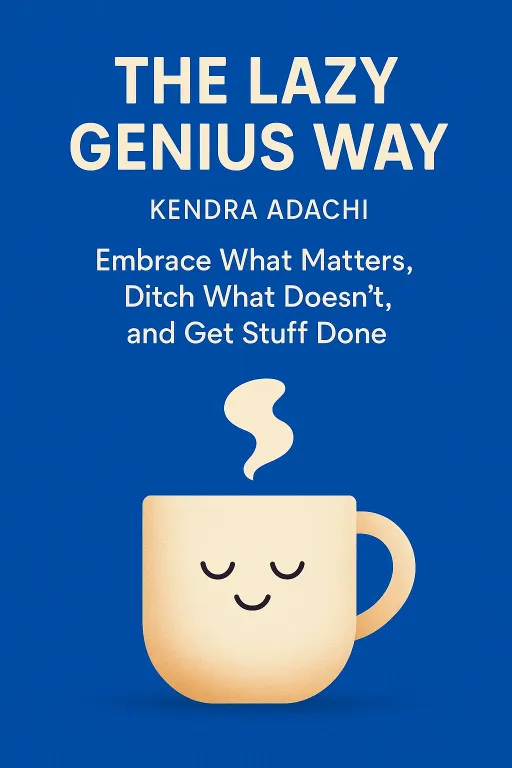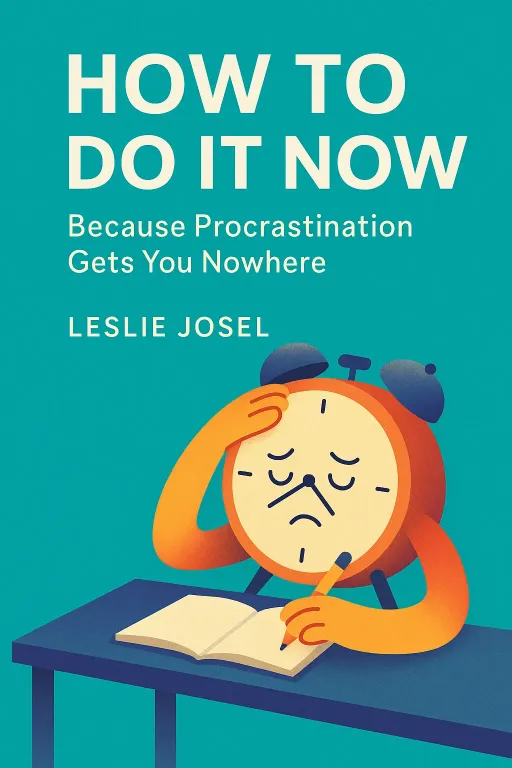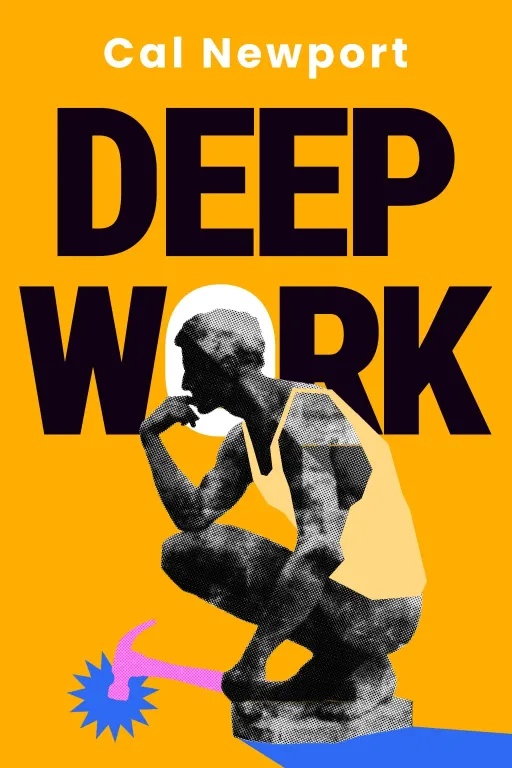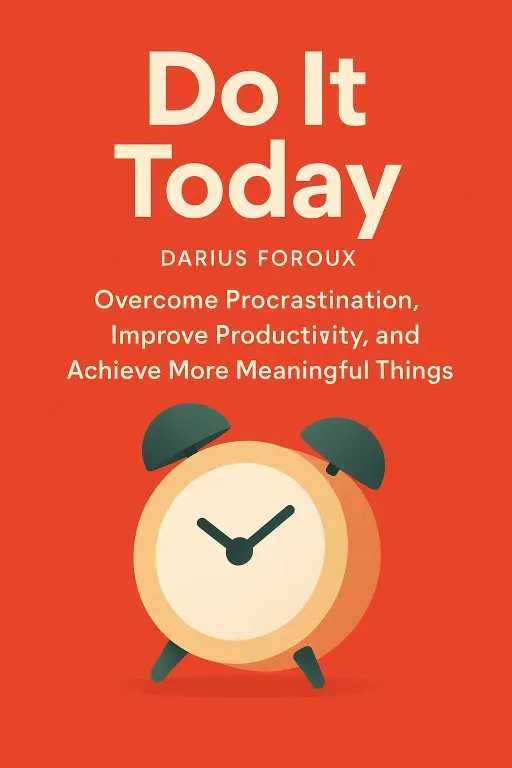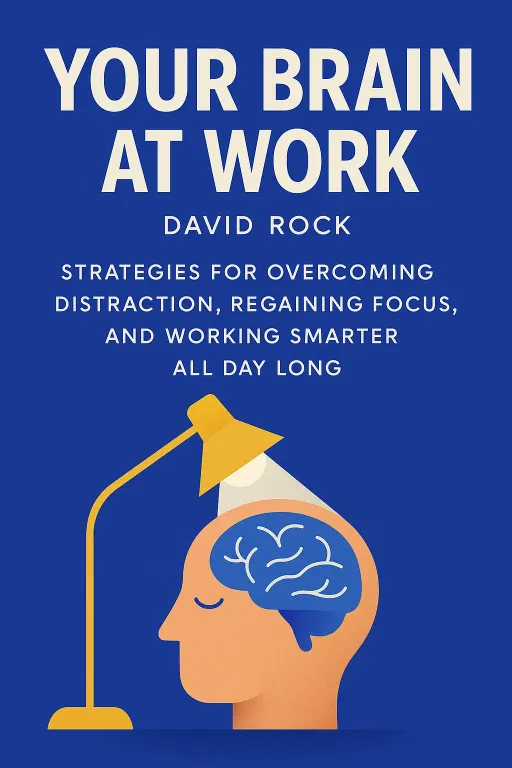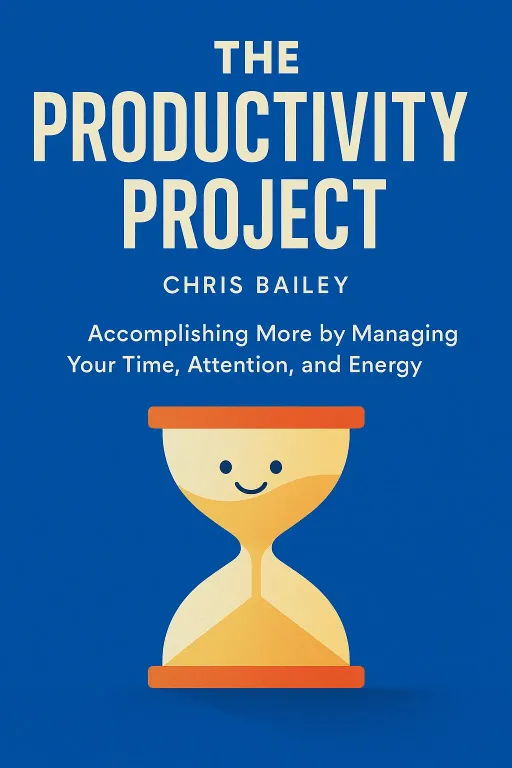
The Product Manager's Compass: Navigating Productivity Beyond the Clock
10 minGolden Hook & Introduction
SECTION
Dr. Celeste Vega: Zhaowei, you're a product manager in finance. Picture this: it's 6 PM. You've been in back-to-back meetings, answered a hundred emails, put out fires... your calendar says you were 100% 'productive'. But as you shut your laptop, you have that sinking feeling: "What did I actually today? What needle did I actually?" That gap between being busy and being truly effective is what we're tackling today.
zhaowei chai: That's not just a picture, Celeste, that's a documentary of my Tuesday. It's the daily struggle. It's so easy to get caught in what I call the 'activity trap,' where you confuse motion with progress.
Dr. Celeste Vega: The 'activity trap'—I love that term. And it's the perfect entry point for our discussion. We're diving into Chris Bailey's "The Productivity Project," a book that argues we've been thinking about productivity all wrong. Today we'll explore this from two angles. First, we'll challenge the very definition of productivity by exploring the power of deliberate work.
zhaowei chai: Okay, I'm intrigued.
Dr. Celeste Vega: Then, we'll unpack the three core ingredients of real accomplishment and reveal how to harness your personal energy cycles for maximum impact. By the end, you’ll have a new lens for your work week.
Deep Dive into Core Topic 1: Beyond Busyness: The Power of Deliberate Work
SECTION
Dr. Celeste Vega: So let's start with that 'activity trap.' Bailey argues the antidote isn't to work, but to work more. He illustrates this with a brilliant analogy that I think will really resonate with you, given your industry: the Monk versus the cocaine-fueled Stock Trader.
zhaowei chai: Okay, you have my full attention. That's quite the contrast.
Dr. Celeste Vega: It is! So, on one hand, Bailey describes this hypothetical, devout monk. The monk does everything slowly, mindfully. If he's writing, he's just writing. He takes an hour to do something that might take someone else ten minutes, but his focus is absolute. He's working with total intention.
zhaowei chai: I can barely imagine that. It sounds like a luxury.
Dr. Celeste Vega: It does, right? Now, contrast that with the other extreme: the stereotypical, 80s-movie stock trader. He's not literally on cocaine in Bailey's example, but he has that energy—frenzied, frantic, multitasking. He's trying to do as much as possible, as fast as possible. He's answering calls, typing on three keyboards, shouting orders. He's the epitome of 'busy'.
zhaowei chai: I know that guy. I work with versions of that guy. Sometimes I a version of that guy.
Dr. Celeste Vega: Exactly! And here's the core insight Bailey had after experimenting with both paces. The monk is too slow. He doesn't accomplish enough. But the stock trader, working on pure autopilot, is also deeply unproductive. He's so caught up in the frenzy that he can't step back to think strategically. He's just reacting.
zhaowei chai: That is so true. The 'trader' mode is the default for so many of us, especially in finance and tech. It's even rewarded—look how responsive they are! But the 'monk' mode... that's where real product strategy happens. That's when you step back from the Jira board and ask, "Are we even building the right thing?" not just, "Are we building the thing right and fast?"
Dr. Celeste Vega: You just nailed the distinction. Bailey says in knowledge work, productivity isn't about how many widgets you produce; it's about how much you. Working on autopilot, like the trader, feels productive, but it's often low-impact. Why do you think that is, from a product manager's viewpoint?
zhaowei chai: Because you become purely reactive. You're responding to the loudest voice in the room or the most recent support ticket, not the most critical, underlying customer problem. Deliberate, 'monk-like' work requires you to pause, synthesize data, and prioritize based on strategic impact. That's the entire job of a PM, but it's the first thing to get squeezed out when the 'trader' energy takes over.
Dr. Celeste Vega: So the goal isn't to become a monk, but to find that sweet spot. To be fast enough to get things done, but slow enough to work deliberately and ensure you're working on the right things.
zhaowei chai: It's about controlling your pace instead of letting the pace control you. It’s a mindset shift from being a firefighter to being an architect. Firefighting is all trader, all the time. Architecting requires that quiet, deliberate monk mode.
Dr. Celeste Vega: A fantastic way to put it. But to be an architect, you need the right materials and energy. And that ability to pause and prioritize requires resources.
Deep Dive into Core Topic 2: The Productivity Trinity & Biological Prime Time
SECTION
Dr. Celeste Vega: This brings us to Bailey's central thesis, which is that productivity isn't just about time. It's a trinity of three ingredients: Time, Attention, and Energy.
zhaowei chai: Okay, so break that down. Time is obvious. Attention, I get—that's about focus. But energy is the interesting one.
Dr. Celeste Vega: It's the game-changer. We all have 24 hours in a day. That's fixed. But our attention and, crucially, our energy, fluctuate wildly. Bailey argues that managing your energy is the most overlooked and most powerful lever for productivity. This led him to one of the book's most practical concepts: identifying your "Biological Prime Time."
zhaowei chai: Biological Prime Time. BPT. Sounds clinical, I like it.
Dr. Celeste Vega: It is! And as an ISTJ, a practical, analytical thinker, I think you'll appreciate the method. For a week, Bailey simply set a timer to go off every hour. When it beeped, he'd stop and rate his energy level on a scale of one to ten. He also noted his focus and motivation. After a few days, a clear pattern emerged. He had a 2-3 hour window in the morning, from about 10 AM to noon, where his energy was consistently a 9 or 10. That was his Biological Prime Time.
zhaowei chai: And the rest of the day?
Dr. Celeste Vega: He also found a major slump around 3 PM, and another smaller peak in the late afternoon. The point wasn't to judge it, but just to observe it. The magic happened when he started scheduling his life around this data. He would guard his prime time fiercely, dedicating it to his most important, high-impact tasks.
zhaowei chai: That's a paradigm shift, but it's incredibly logical. We protect our time with calendar blocks that say "Busy," but we don't protect our best. I know for a fact that I'm sharper in the morning. I could write a complex product requirements document in 90 minutes at 9 AM that would take me three hours of painful, distracted work at 4 PM.
Dr. Celeste Vega: And you'd probably make more mistakes at 4 PM, which creates more work later. So, thinking as a leader on your team, how could you use this concept? How could you leverage your team's BPT?
zhaowei chai: Oh, this is a powerful leadership tool. First, for my engineers, whose prime time is often the morning, I could champion a team-wide policy of 'no meetings before 11 AM.' That gives them a protected, 2-3 hour block for deep coding work, which is their highest-impact activity. The cost of interrupting a developer in flow state is massive.
Dr. Celeste Vega: That's a huge, tangible benefit. And for you personally?
zhaowei chai: For me, I'd reserve my own prime time—which is probably 9 to 11:30 AM—for the tasks that require the most brainpower and emotional regulation. Things like analyzing complex user data, writing a go-to-market strategy, or having a difficult negotiation with a stakeholder. The low-energy, low-concentration tasks, like clearing my inbox or routine status updates, can be saved for that 3 PM slump when I don't need to be at my best.
Dr. Celeste Vega: You're essentially matching the task's demand with your energy supply. It's so much more efficient than just tackling a to-do list chronologically.
zhaowei chai: It's working smarter, not just harder. It's acknowledging that not all hours in the day are created equal. My 9 AM hour is probably worth three of my 4 PM hours for certain tasks. Treating them the same is just... inefficient. And as an Inspector personality type, I can't stand inefficiency.
Synthesis & Takeaways
SECTION
Dr. Celeste Vega: So if we tie these two big ideas together, it's a powerful, two-part formula for a new kind of productivity. First, you adopt a more deliberate, 'monk-like' intention to focus on what's truly important, not just what's screaming for your attention.
zhaowei chai: Right, you shift from reactive to proactive.
Dr. Celeste Vega: And second, you align that intention with your peak energy by scheduling your most critical work during your Biological Prime Time. You give your best energy to your most important tasks.
zhaowei chai: Exactly. And for anyone listening who feels overwhelmed by this, Bailey offers a very simple, practical way to start. It's a habit I'm going to implement tomorrow, and it's called the 'Rule of 3'.
Dr. Celeste Vega: Tell us about it. It's one of my favorite takeaways from the book.
zhaowei chai: It's beautifully simple. At the start of each day, you just pause and decide on the three most important things you want to accomplish by the end of the day. You can do it for the week, too. It's not your entire to-do list; it's your highlight reel. It forces that deliberate 'monk' mindset for a few minutes.
Dr. Celeste Vega: It forces you to define what 'accomplishment' looks like for that day.
zhaowei chai: Precisely. And once you know your three goals, you can then ask, "When is my prime time, and how can I use it to make progress on these three things?" It connects the 'what' with the 'when' in a really powerful way. It's a small habit, but it's the perfect first step to shift from being busy to being truly productive.
Dr. Celeste Vega: A simple rule to cut through the noise. Zhaowei, thank you. This has been an incredibly practical and insightful discussion.
zhaowei chai: Thank you, Celeste. I'm already redesigning my calendar for tomorrow.
